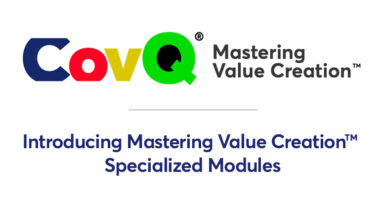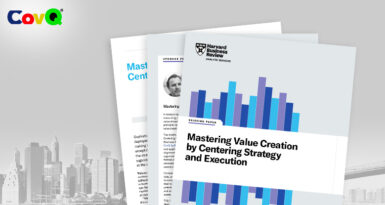
As board members, we are all familiar with strategic planning, it is at the core of our work advising and governing businesses.
A strategic planning session can range from a short informal discussion to an all-day or multiple-day event, or a process taking a couple of months in several intervals with many hours of slides and whiteboarding. It can also be a struggle to engage everyone involved during this time, with differing opinions, experiences, and interests. Frequently you will spend this time analyzing the company, and in some cases, you will only receive a report from which you will be required to make and approve major decisions.
The whole process may be generally avoided for all of these reasons.
More and more boards are asking for ways to decrease the amount of time that strategic planning takes so they can spend more time working on the solutions. Furthermore, they do not want to reinvent the wheel and increasingly demand efficient frameworks to make their lives easier and roles more effective.
In 2018, PWC conducted their board survey which revealed that only 19% of boards had implemented a culture/engagement component to their strategic plan, and only 21% had reviewed their crisis management plan. In 2020, these 2 topics rose to the top of every board and CEO’s agenda, however, in the 2020 PWC survey, only 37% of board directors agreed that they understood the crisis management plan so it is clear that most boards are not effective at planning ahead or communicating among the board members and with the CEO.
Strategic Planning is frequently led by the busiest CEO or second in command, which means if you are a board member, you are not the one who initiates the meeting resulting in a more reactive role. However, the strategic planning and meeting process is essential.
These are four considerations for board members or CEOs who need to improve their strategic planning process:
1) Make sure that you are well informed about the way that your company has conducted strategic plans in the past, and what worked/did not work. It is also critical to read up on any historic planning sessions that have taken place if you were not involved. You may be in a position to influence the board and CEO about a better way to conduct these sessions.
2) Ensure that value creation covers all aspects of the business building toolset and speaks to all stakeholders including shareholders, clients, employees, industry bodies, partners, and corporate environments. The role of the board member has evolved. It is crucial for board members to make sure their firm is a responsible corporate citizen addressing all aspects of sustainability, diversity, inclusion, and more.
3) Spend time on the strategy, not on the analysis, or the execution.
“Noses in, fingers out” is a common saying among board members to remind themselves that they are there to listen, ask questions and come up with solutions, not to get involved in the day-to-day running of the business. Strategic planning at the board level should not require you to come up with the report, but you should be spending a lot of time reviewing the results and framing your questions. Strategy consulting firms or expert advisers can provide a fast and efficient way to start the strategic planning process. An initial assessment based on an agile framework will reveal insights on the business that board members can work with, and, since we are in the digital age, a cohesive software solution needs to serve as the infrastructure for the ongoing and transparent execution.
4) Continued assessment and evaluation
As a board member, you will often have a 3 or 4-year term. There are varying opinions about the frequency of strategic planning sessions, however, most CEOs and board members will agree that there needs to be frequent updates on progress. If something isn’t working, it is the responsibility of the board member to guide and advise on other options. A strategic plan needs revisiting after the event to determine what worked and what didn’t. It is supposed to advance and prepare the company’s future and lay the foundation to set up future board members for success.
All things considered, in order for boards to prepare for the future, strategic planning must be a regular board agenda item. However, improving the accuracy of the reporting and cutting the time down to deliver is imperative to ensure that boards and CEOs are motivated to get this done. Boards should be pushing their management teams to find opportunities and risks within the business. Technology and best practices need to be implemented to support and guide the process. Those that work diligently to implement this approach will emerge much stronger.




